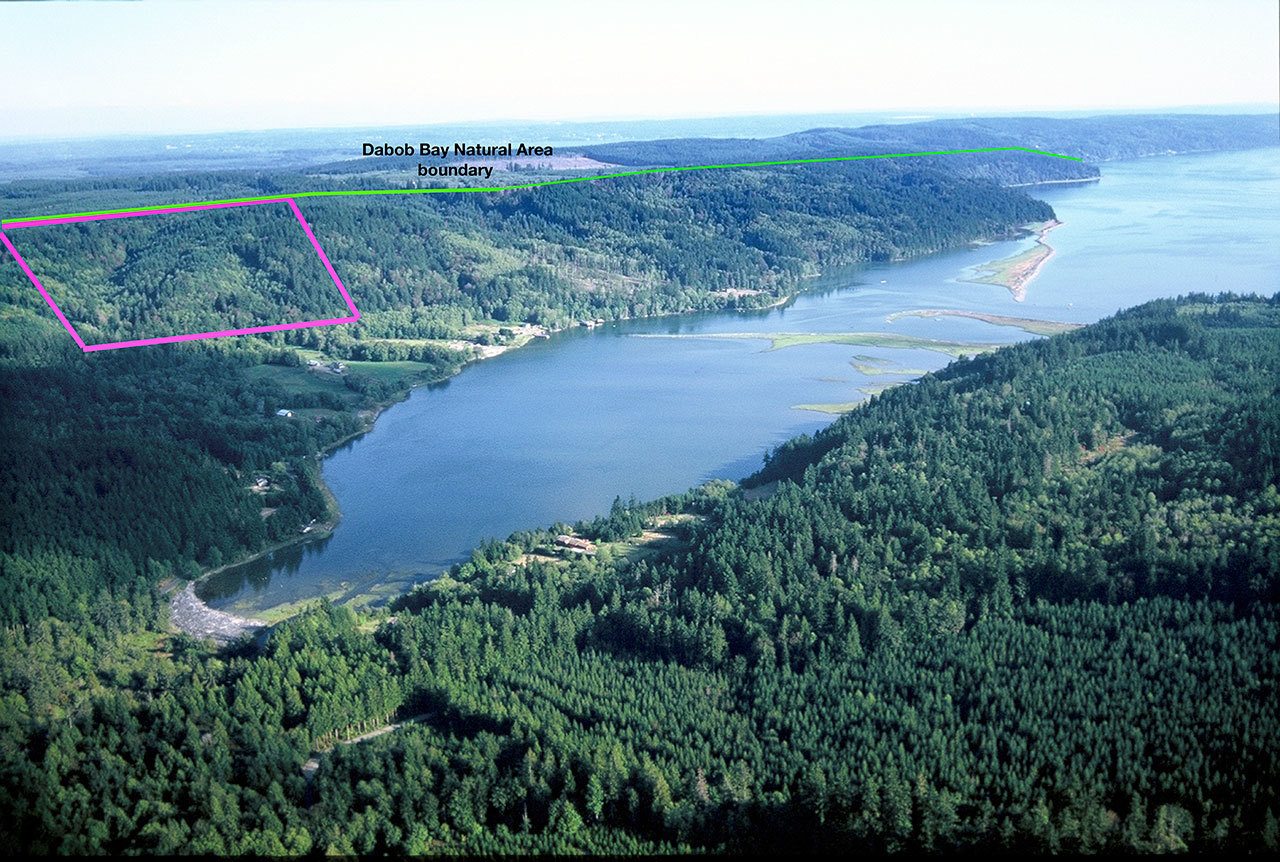QUILCENE — The Dabob Bay Natural Area has been expanded by 159 acres.
Pope Resources sold 159 acres to the state Department of Natural Resources for $899,000 on Dec. 29. The area is now part of a state-managed conservation area above Tarboo Bay.
“This parcel is an important addition to the natural area and will help provide long-term protection to Dabob Bay’s water quality, shellfish beds and wildlife habitat,” said Peter Bahls, a biologist and director of the Northwest Watershed Institute, a conservation group that helped with the acquisition.
As part of the negotiations for purchase, Pope Resources agreed to hold off on a proposed timber sale that was of concern to neighbors and a shellfish farm located downstream, Bahls said.
“We really appreciate Pope Resources’ cooperation in this conservation effort,” said Dave Steele, manager of Rock Point Oyster Company.
“Although we do not have a problem with timber harvest in general, over the years, we have experienced a number of flooding and siltation events that have damaged shellfish production.”
Rock Point Oyster Co. Inc., incorporated in 1921, is a multigenerational family shellfish business that farms 200 acres of private tidelands in Tarboo Bay. It operates in the bay year-round and harvests about 2 million pounds of clams and oysters a year.
Pope Resources is the largest private landowner in East Jefferson County, managing nearly 47,000 acres in Jefferson County and over 200,000 acres in Washington, Oregon and California, according to Mike Mackelwich, director of timberland operations.
“Pope Resources is pleased to work with the local community, Northwest Watershed Institute and the Department of Natural Resources to facilitate conservation sales that provide private landowners fair compensation for properties that are better suited for other resource protection goals,” Mackelwich said.
“Pope Resources remains committed to growing its ownership in Jefferson County and is actively looking to acquire additional timber lands well suited for long-term timber production.”
In 2009, the proposed boundary of the natural area was expanded to nearly 6,200 acres by DNR to better protect the long-term health of Dabob Bay.
Last December, Peter Goldmark, then-commissioner of public lands, approved a further expansion of the boundary to include more slopes along Dabob Bay, some upland forest on the Coyle Peninsula and the shorelines of Thorndyke Bay.
Since 2009, DNR, the Northwest Watershed Institute, the Jefferson Land Trust, the Navy, The Nature Conservancy and other conservation partners have been working with willing landowners to acquire land within the Dabob Bay Natural Area boundaries, Bahls said.
Approximately 3,000 acres have been conserved to date, he said.
Funding for the most recent acquisition was provided by a DNR grant award for Dabob Bay from the state Wildlife and Recreation Program.
In addition, the Navy contributed half of the purchase price through its encroachment protection agreement with DNR, which allows the Navy to partner on real estate transactions that protect lands from development around the Navy’s Dabob Bay training area.
After purchase, DNR and the Navy recorded deed restrictions on the property that prevent development and permanently protect it as part of the Dabob Bay Natural Area.
“Tarboo-Dabob Bay is one of the largest and least impacted salt marsh estuaries remaining in Puget Sound, and supports shellfish, fish and wildlife resources of statewide importance,” Bahls said.

